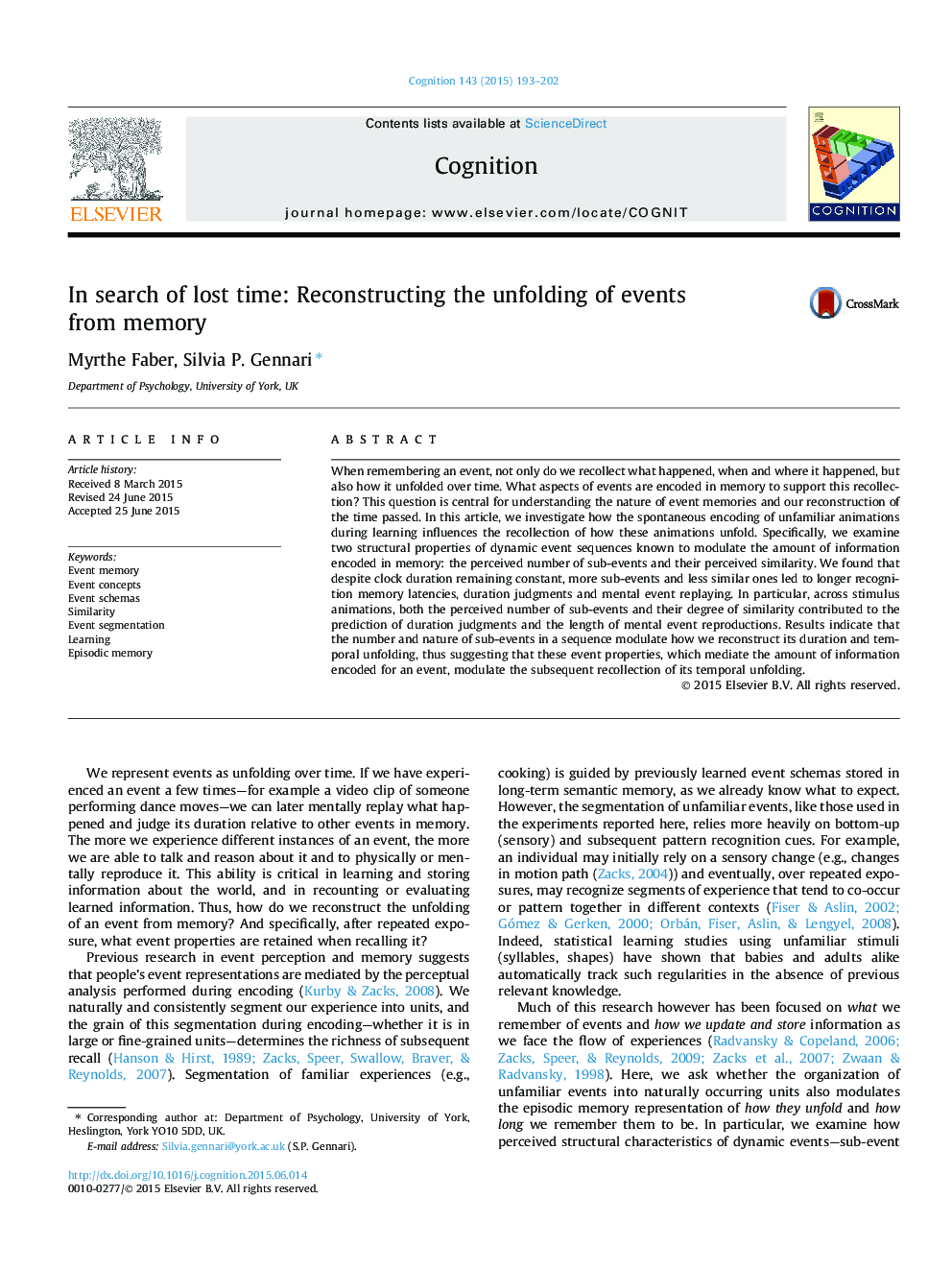| Article ID | Journal | Published Year | Pages | File Type |
|---|---|---|---|---|
| 7286732 | Cognition | 2015 | 10 Pages |
Abstract
When remembering an event, not only do we recollect what happened, when and where it happened, but also how it unfolded over time. What aspects of events are encoded in memory to support this recollection? This question is central for understanding the nature of event memories and our reconstruction of the time passed. In this article, we investigate how the spontaneous encoding of unfamiliar animations during learning influences the recollection of how these animations unfold. Specifically, we examine two structural properties of dynamic event sequences known to modulate the amount of information encoded in memory: the perceived number of sub-events and their perceived similarity. We found that despite clock duration remaining constant, more sub-events and less similar ones led to longer recognition memory latencies, duration judgments and mental event replaying. In particular, across stimulus animations, both the perceived number of sub-events and their degree of similarity contributed to the prediction of duration judgments and the length of mental event reproductions. Results indicate that the number and nature of sub-events in a sequence modulate how we reconstruct its duration and temporal unfolding, thus suggesting that these event properties, which mediate the amount of information encoded for an event, modulate the subsequent recollection of its temporal unfolding.
Related Topics
Life Sciences
Neuroscience
Cognitive Neuroscience
Authors
Myrthe Faber, Silvia P. Gennari,
